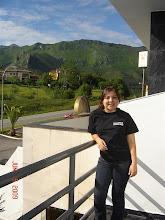“Teaching Students to Use Their Heads, Hands, and Hearts” by Lisa Bucciarelli is an article on a teacher who uses technology to help engage the students to learn a foreign language. This sound very much like what we do in our Education class. The teacher has created an online portfolio that is safe and secure for the students. This is also accessible for the parents in order to see their kid’s improvement. There does seem to be a lot of improvement and really positive feedback on the matter. The teacher found many useful sites that can be used to create assignments that are not only interesting but also educational. This is a great route to take as a foreign language teacher.
The author provides many links to the sites she uses to create these assignments. I think I could really follow in her steps in order to teach my students, surely after modifying it to my teaching styles. I think these are great example of successful teaching techniques that we can take advantage of and use them in our classrooms.
Prepare for a Bright Future - Enroll Today
-
UW-Stout Online Professional Development
Quality online professional development since 2004.
5 years ago

